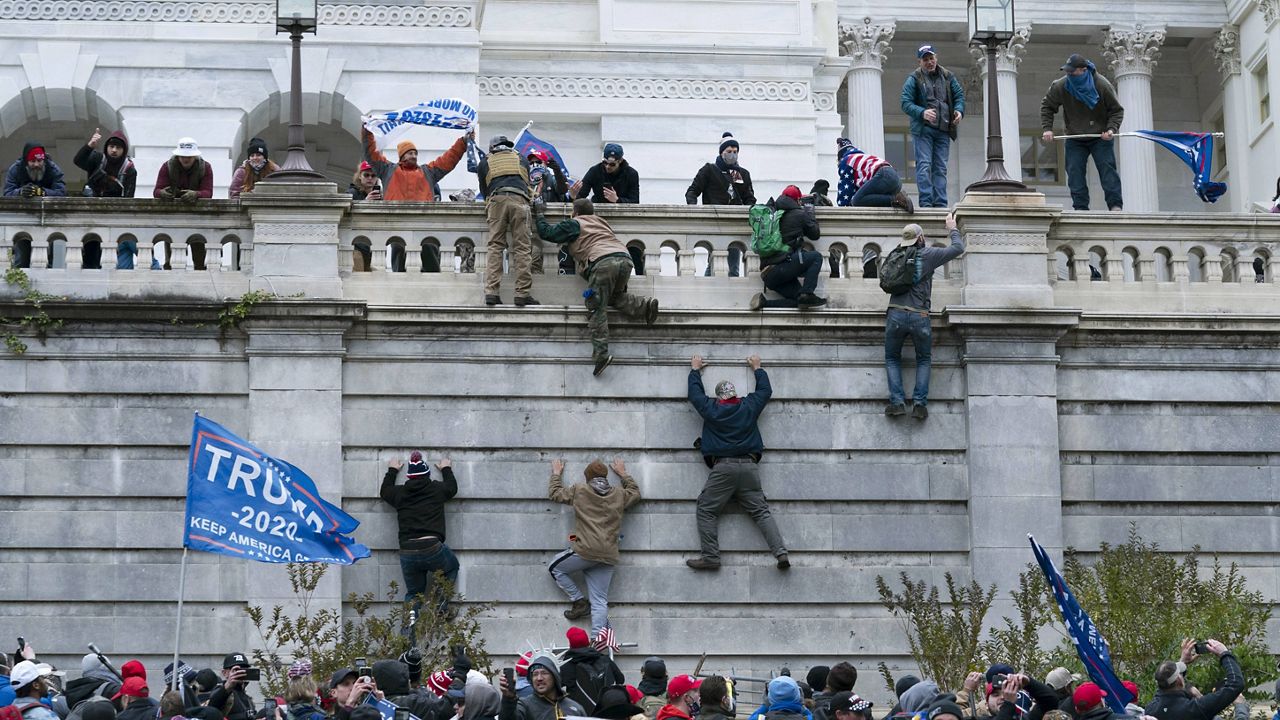It has been one week since the partial collapse of Champlain Towers South in Surfside, Fla., which has killed at least 18 people and left 145 missing.
For some, the scene on the ground – the rubble, the photos of missing tacked onto nearby fences, the search-and-rescue teams working around the clock to find survivors – are reminiscent of another tragic moment in U.S. history: the September 11, 2001 terror attacks.
Families of 9/11 victims say the fresh images from the Miami-area condo collapse continue to haunt them all the same.
“I went through everything they are going through. I felt the same way,” said Sally Regenhard, who became a leading activist for 9/11 victims and their families after her 28-year-old son, Christian, a New York firefighter, perished in the collapse. “The grief, the loss, the shock and not really knowing what’s going on.”
Christian's remains, along with the of more than 1,000 other victims, have still not been recovered in the two decades since the collapse of the World Trade Center – despite the fact that, for the past 20 years, a full team of people at the medical examiner’s office in Kips Bay, New York, has worked tirelessly to process these hard-to-identify remains.
Regenhard and other families of the victims have accused the City of New York of denying them proper burials after sending debris to a Staten Island landfill so it could be further examined.
“What happened to my son, nearly his entire engine company, they disappeared from the face of the earth… Nothing to bury. Nothing to memorialize,” Regenhard told Spectrum News in an interview. “It’s as if you never lived.”
In 2008, a federal judge dismissed a lawsuit from a group of 9/11 families to search through debris at the site – known colloquially as the “Fresh Kills” landfill.
The lawsuit was, in part, based on a letter from Dr. Charles Hirsch, then New York City’s chief medical examiner, who wrote in a 2003 letter that it was “virtually certain that at least some human tissue is mixed with the dirt at the Staten Island landfill.”
“Not every wrong can be addressed through the judicial process,” Judge Alvin Hellerstein wrote in his ruling, which he said he made reluctantly, per the New York Times. “The grave harm suffered by the plaintiffs in this case is undeniable. But the jurisdiction of a court is limited.”
Still, families of victims insist the process was mishandled – and have voiced concern in recent days that officials in Miami could be doing the same.
“I don’t want the people in Florida to go through what we did,” Regenhard said, adding that she wants to ensure none of the Surfside remains are “inadvertently discarded because if they are, they will wind up like we are."
In 2006, the U.S. Department of Justice’s Office of Justice Programs, or OJP, issued a lengthy, 130-page report titled, “Lessons Learned From 9/11: DNA Identification in Mass Fatality Incidents.” Among other things, the OJP report criticized New York for failing to have the proper “policies or procedures” in place for identifying the victims of 9/11 – or any other mass fatality event that might have occurred – through DNA analysis.
New York now boasts one of the most sophisticated DNA analysis labs in the country, experts and former first responders told Spectrum News.
The OJP report also included a series of recommendations for cities to follow in the aftermath of a mass fatality event in order to properly identify human remains.
It stressed the importance for the medical examiner’s office to act swiftly in the first 48 hours after a mass fatality event, concluding that, in the aftermath of 9/11, “hasty or reactive decisions made during the initial hours of the [attacks] caused management obstacles” in identifying victims’ remains.
“We know that because of so much volume of material going to landfill in Fresh Kills and other places, the time to search for smaller remains was not in place,” Glenn Corbett, who helped advise the federal investigation into the World Trade Center collapse, told Spectrum News.
In wake of the Surfside collapse, he stressed the importance for Miami-area officials to ensure “trained individuals, particularly anthropologists, pathologists” are part of the teams tasked with going into the rubble – especially as search-and-rescue efforts are slated to surpass the one-week mark, making the odds of finding living victims increasingly unlikely.
It is unclear to what extent officials in Surfside are following the DNA protocols outlined in the DOJ report.
But Regenhard, for her part, said she hopes that whatever course has been selected, it is one that gives the families a chance to find closure. “Once it is gone, it is gone and I believe my son’s human remains with the rest of over 1,000 people were trucked out and disposed of. That is really a tragedy for everyone.”









